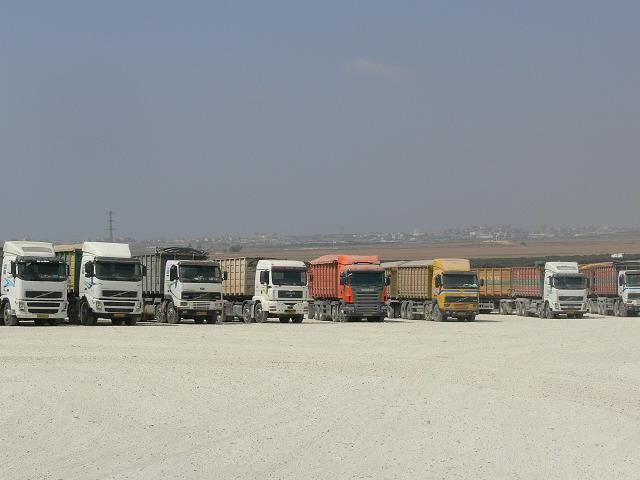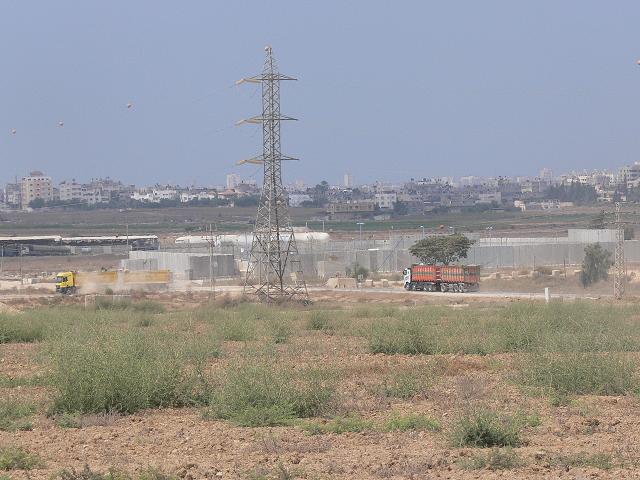Yesterday alone, over 89 trucks of international aid and gasoline was poured into the Gaza Strip. Since September 1st, over 700 truckloads of international aid including over 1,760,000 liters of gasoline have been given to the Gaza Strip. Since the end of Operation Cast Lead on January 18th, now over 2,000 truckloads of far more than 37,000 tons of humanitarian aid has been delivered to the Gaza Strip.
(Video: Haim Benisti and Jacob Shrybman)
As the international community continues its uproar over the humanitarian situation in the Gaza Strip, spokesman for the Israel Civil Administration which manages the Palestinian Authority requests for aid, goods, and gasoline, Guy Inbar says that these are in fact decreased amounts. Inbar says, “Over the past two to three months we have seen a definitive decrease in the requests from the Palestinian Authority, because they have goods, foods, and medicines that still have not been used.” Inbar continues by explaining the situation inside the Gaza Strip, “As we have said before there is no humanitarian crisis in Gaza.”
While sitting for hours watching truck after truck drive in and out of the Gaza Strip, over the phone with Dr. Adriana Katz, director of three of the mental health and trauma centers in Sderot told how there is no change in the lack of budget for the closing Sderot centers. The area’s five trauma centers that are constantly treating the victims of this largely psychological terrorism are being forced to close their doors. The Emergency Center in Sderot which is the first aid clinic that treats victims immediately after an attack was shut down this past July, the director of the Sderot Trauma Center, Dalia Yosef, has been let go, and the area’s four remaining centers are all set to be closed by December 1st.
Staging ground for international aid trucks in front of the Gaza Strip. (Photo: Jacob Shrybman)
How can a world that prides itself on slogans and political jargon of “both sides of the conflict” and “two states for two peoples,” completely turn its back on the side of Sderot?
After a letter from the Sderot Media Center to the European Union, calling for international aid to the victims of rocket fire in southern Israel, British Ambassador Tom Phillips visited the centers in Sderot with Sderot Media Center on June 4. Ambassador Phillips met with both Dr. Adriana Katz and Dalia Yosef regarding the situation of the trauma centers, but the centers still have not seen any allocation of aid.
On August 5th, five top Australian Parliamentarians visited the closed Emergency Center in Sderot, but the centers still have not seen any allocation of aid.
On August 11th, Texas Governor Rick Perry and ranking Republican member of the US House Foreign Affairs Committee Ileana Ros-Lehtinen visited the closed Emergency Center in Sderot, but the centers still have not seen any allocation of aid.
With now more than 240 aerial attacks from the Gaza Strip since the end of Operation Cast Lead and seven in the past five days, Dr. Adriana Katz commented “It doesn’t seem that there will be any quiet even though I am only slated to work until December 1st.”
International aid trucks entering the Gaza Strip. (Photo: Jacob Shrybman)
An average of 80 truckloads a day of international aid and gasoline, all materials frequently used to produce the fuel for the Qassam rockets, will continue to pour into the Gaza Strip with no end date in sight as the world turns its back on the thousands and thousands of Israeli victims from the near decade of rocket attacks.











